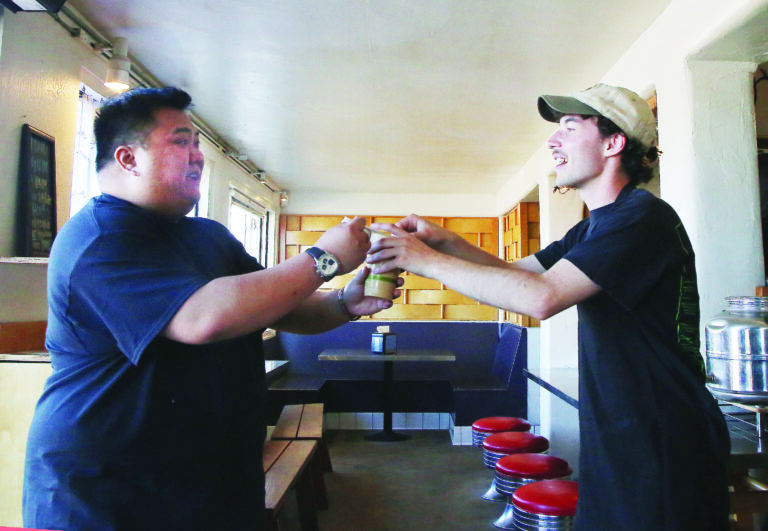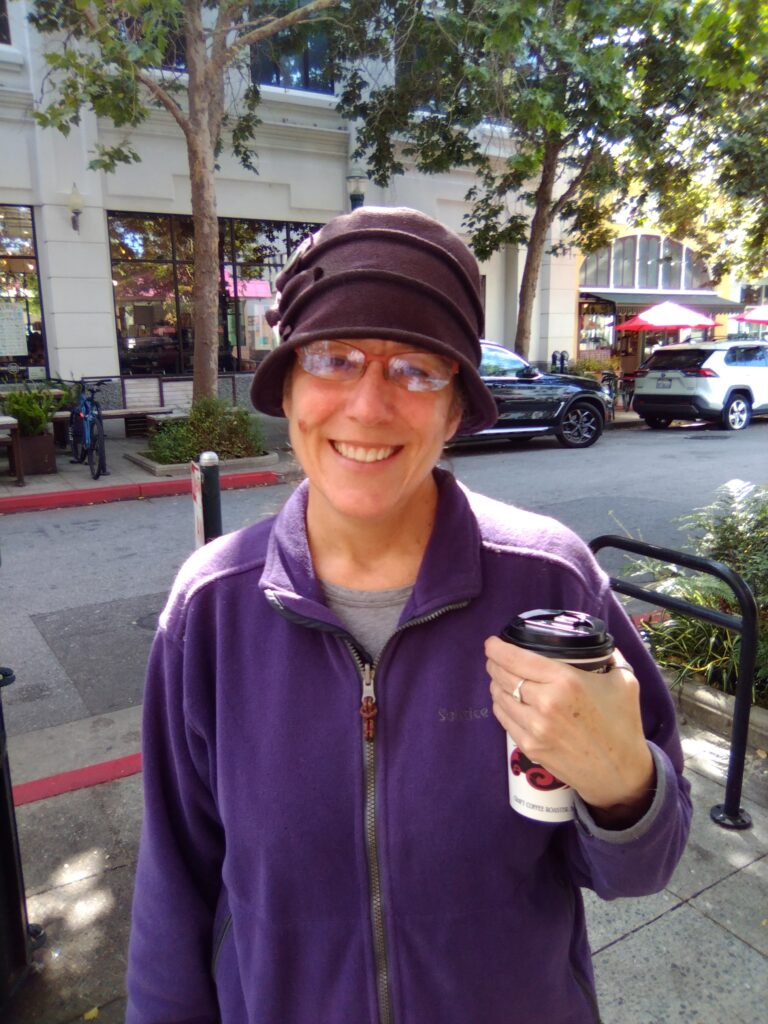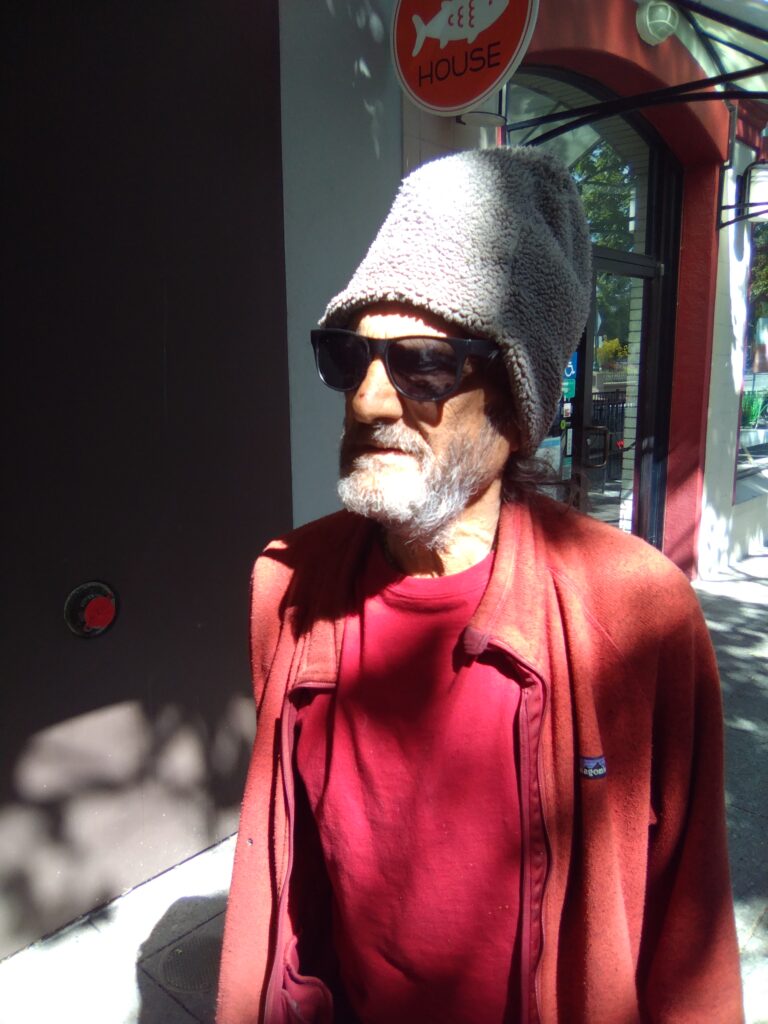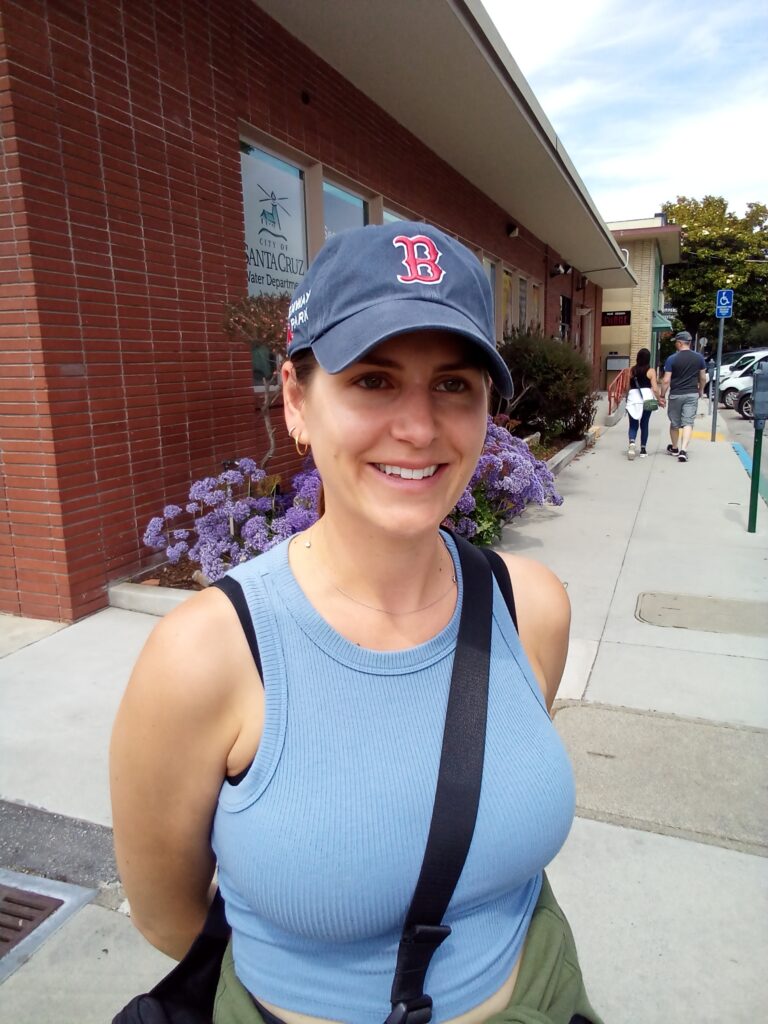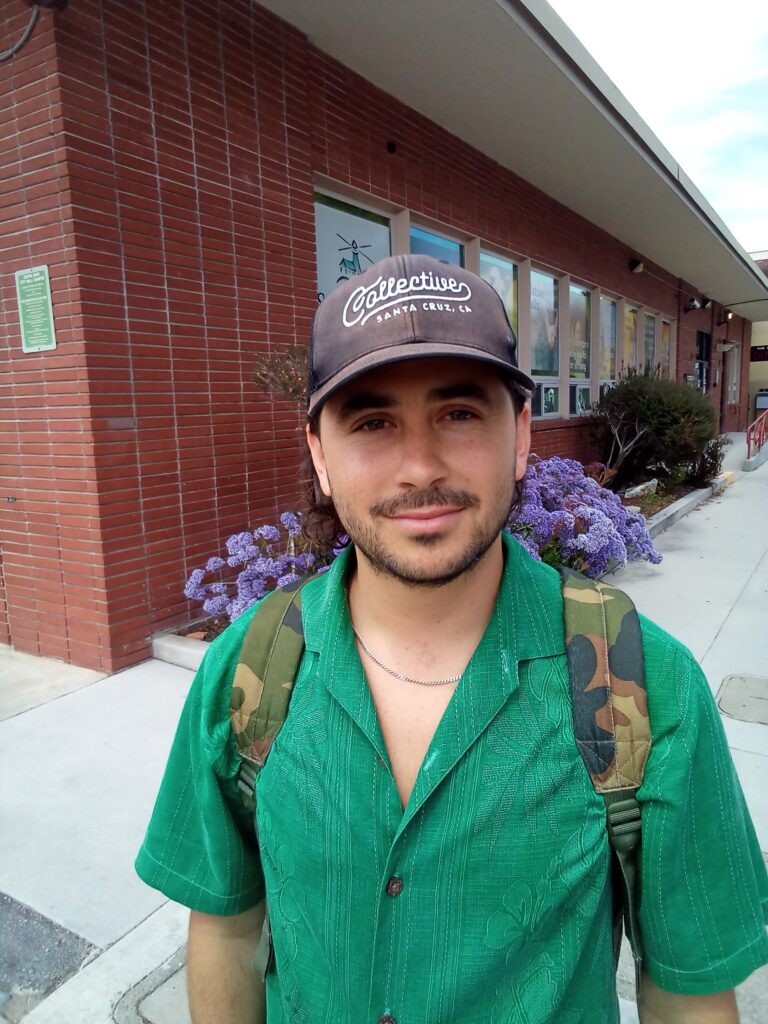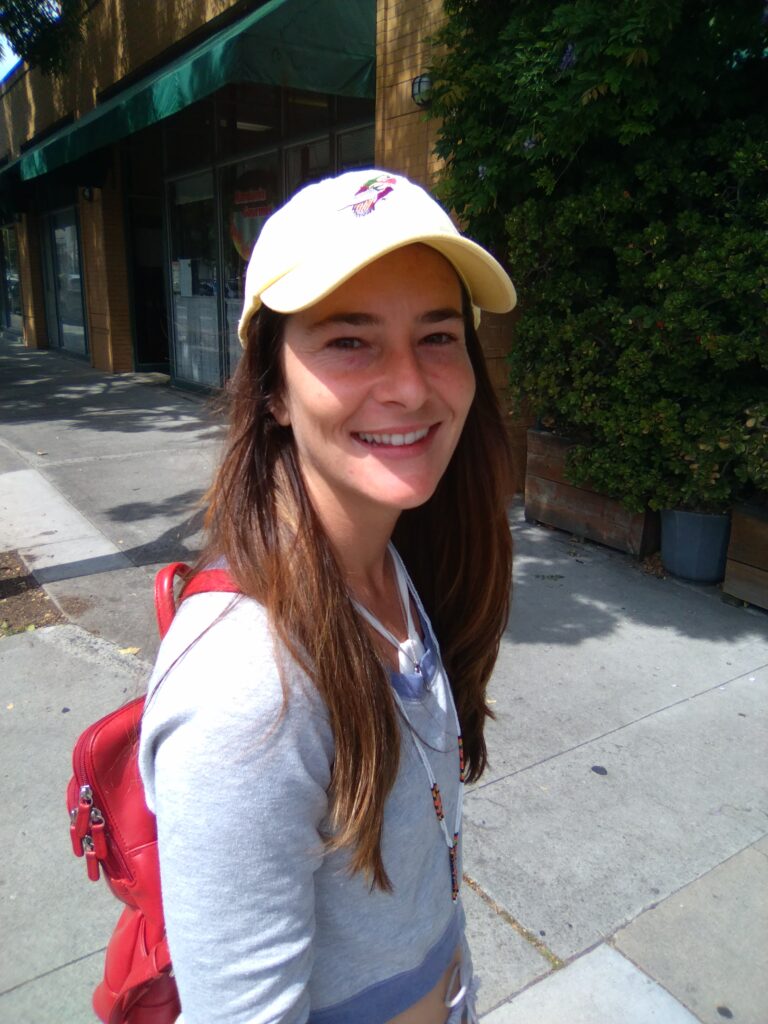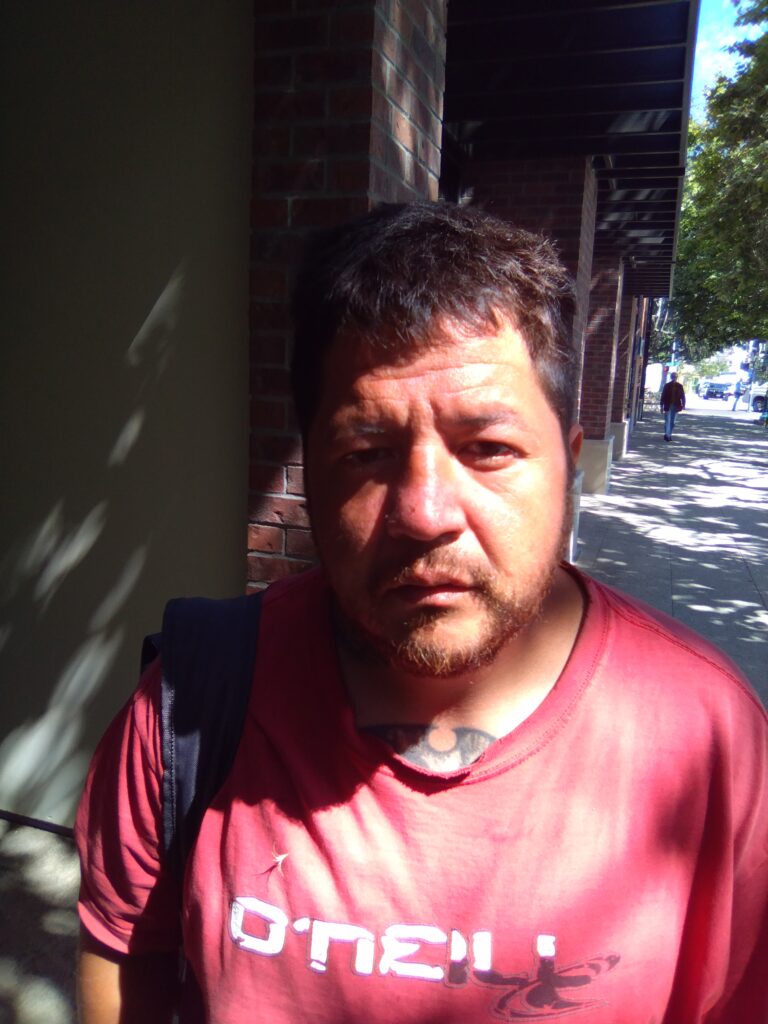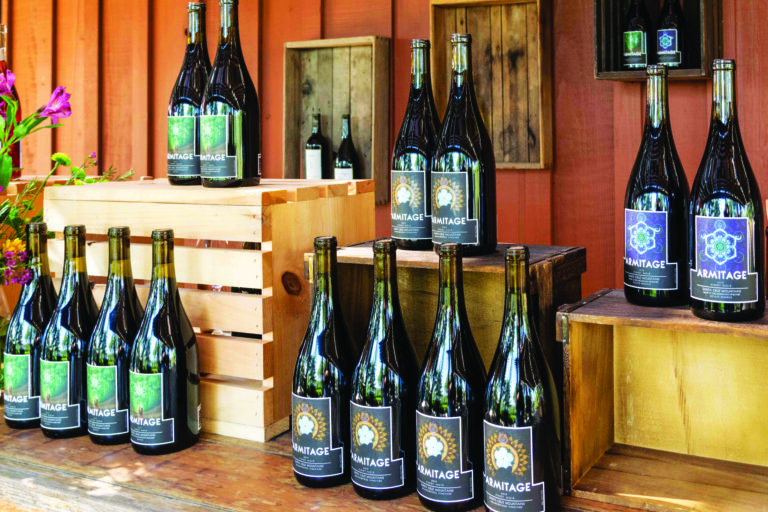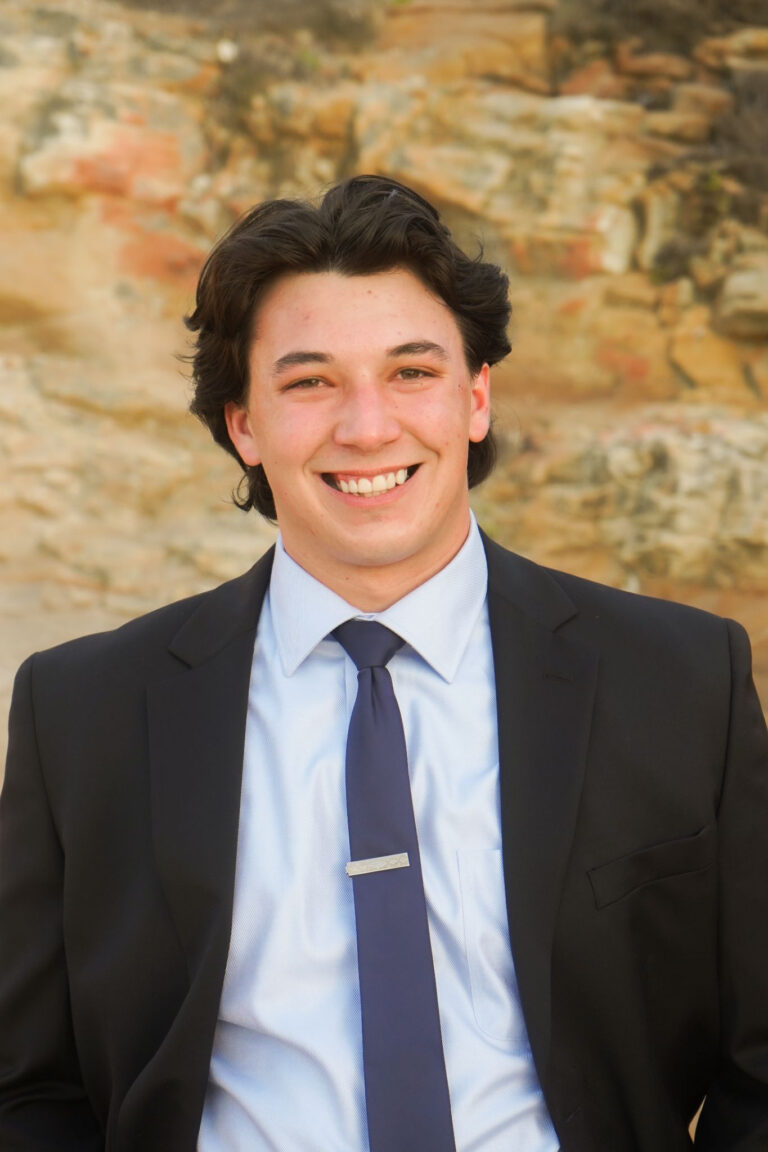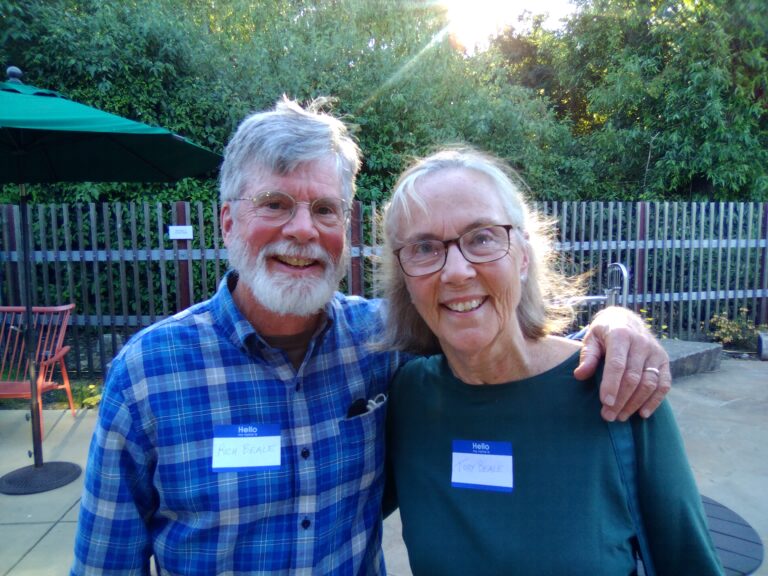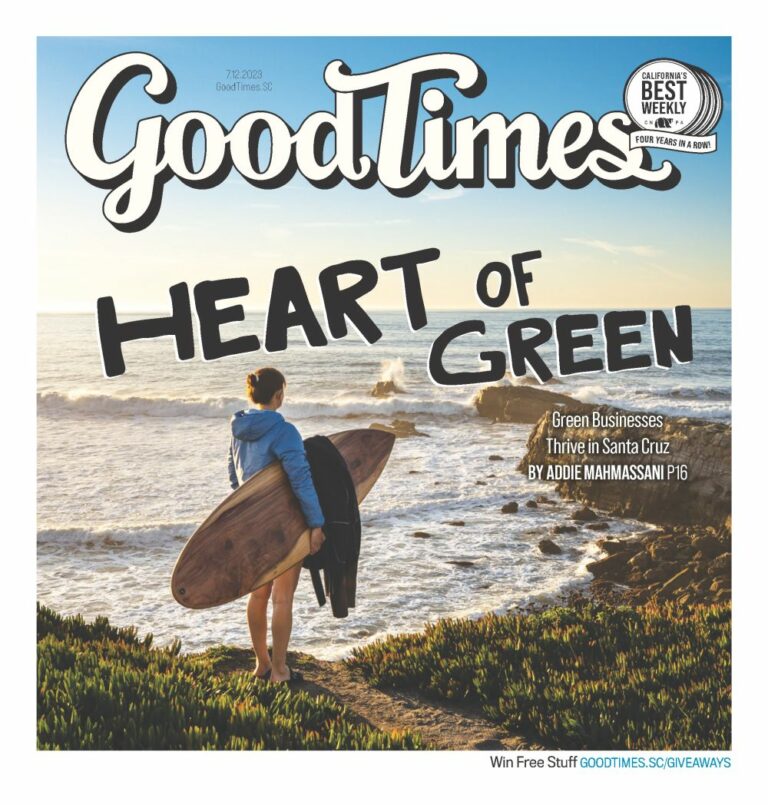Santa Cruz businesses are on the cutting edge of new environmental products
This past winter 5,000 tons of rock eroded from the Santa Cruz coastline as the stormy sea battered the cliffs. Tiffany Wise-West, Sustainability and Climate Action Manager for the City of Santa Cruz, said in a February community presentation that city officials had not been expecting damage on that scale “for another 20, 30, 40 years.” Her statement was met with audible gasps and sighs from the audience.
After a season of piers crumbling and trees falling through the county, it’s understandable to feel anxious about the intensifying impacts of climate change. But social scientists warn that at a certain point, healthy worry can give way to “Apocalypse Fatigue,” feelings so hopeless that they keep us from acting in ways that can help. This issue, we celebrate an array of local entrepreneurs who have not let overwhelming statistics—and more and more lately, experiences—stop them from reducing their carbon footprint.
These green business owners are a diverse bunch, but one thing is clear: Santa Cruz is key to what they do. For some, the region provides the raw materials for sustainable industry: reclaimed redwood, shrimp shells, seaweed. For others, the ideal markets are here: surfers, farmers, cannabis-enthusiasts. For many, skills honed in and around Silicon Valley gave them the confidence to hang their shingles over the hill. Environmentally focused institutions in town—from UCSC’s Rachel Carson College to the nonprofit Santa Cruz Works—provide networks and knowledge for green entrepreneurs at all levels.
For all, the spirit that defines Santa Cruz—a rare mix of ambition, optimism, progressive values, laid-back vibes and daily appreciation for the beauty (and power) of the natural world—fuels their work.
TIMBER SURF CO.
timbersurfco.com/
Ryan Lynch was already fighting the good fight for sustainability when he decided to make a radical life change. “I did product design as my degree and from there did heaps of jobs in the Bay Area out of Oakland,” he says. “I worked at Tesla for seven years, kind of in the early days.” His work on electric vehicles was gratifying but exhausting. “I spent a couple years on the craftsmanship engineering team,” he says. “It was kind of the middle ground where design and engineering met.” What began to gnaw at him was the relentless pace of the company, the draining commute, the deterioration of any trace of work-life balance.
Make that surf-life balance.
Lynch grew up in Sunnyvale and got bitten by the surfing bug early in life. “I would always come to Santa Cruz as a kid,” he says. “We would come via parents as kids, and then when somebody got a driver’s license, we would start ditching school.” Years later, as his career at Tesla pushed him toward burnout, his lifelong love of surfing suggested a new pursuit: eco-boards made from reclaimed redwood and cork. After a six-month leave of absence during which he surfed and traveled, living in a van with his wife, a little more time at Tesla to build up funds and a final goodbye, Lynch moved to Santa Cruz and dedicated himself full-time to Timber Surf in 2018.
At the Timber Surf workshop in Aptos, slabs of wood fill every corner and table in various states on their journey toward the ocean. Lynch’s boards are all made-to-order, each one tailored to customer, sustainable and 100% surfable. As with all the businesses profiled here, details of the creation process could fill a book. The important thing is that, through what he describes as “years of tinkering,” Lynch found a cost-effective way to make high-performance boards that use about 25-50% less synthetic material than the average polyurethane board.
The secret is in the natural materials—flax cloth, cork and slab-cut redwood skins sourced from fallen trees in the Santa Cruz Mountains—he uses to strengthen the boards, replacing a large portion of the fiberglass and resin typically needed. The resin Lynch uses is 35% tree sap-based instead of polyester, and the EPS foam core of the boards is slightly more eco-friendly than the polyurethane alternative.
Essentially, by rethinking each step of the process, Timber Surf gives you a board that doesn’t leech microplastics into the ocean.
BOARD INNARDS
Given their unique construction, these boards don’t dent and are built to last a lifetime whereas the average mass-produced surfboard winds up in a landfill after several years of use. The trade-off is, of course, time and expense. Making the organic boards takes three weeks, compared to the 1-2 days it takes to use polyurethane.
Lynch estimates that 40-50% of his orders come from folks in town. Timber Surf Co. is one of only three companies making boards like this in the world—with the other two in Australia and France.
“I know that this company will never buy me a house,” Lynch says. “I’m not unrealistic. My board constructions are not immensely scalable. They’re just really good boards meant to give somebody a great experience.”
TREESWAX
treeswax.com
Christian Shaw’s path to Santa Cruz began on the other side of the country in Ithaca, New York. He describes his hometown as “a little hippie enclave” with a “very similar social climate” to Santa Cruz. At Cornell University he studied sustainability with a business minor, pursuing interests in permaculture, agroforestry and more. He also grew up surfing on trips to the Outer Banks in North Carolina. After college he focused on plastic pollution while running the nonprofit he co-founded, Plastic Tides. It got him thinking about something made of petroleum that he used often: surf wax.
“I realized that surf wax was all plastic,” he says. Around 2014, several oil spills around the globe were the final straw that motivated him to develop a 100% petroleum-free alternative. He knew “we could be doing this differently,” he recalls. Thus, Treeswax was born.
“I’ve gone through dozens of different ingredients and hundreds of formulations,” he says. “A goal when I started dialing it in was actually to limit them.” In 2021 he filed a patent for a four-ingredient wax that works just like popular brands and costs even less. The product is “responsibly sourced from rocks and trees,” Shaw says. “What that means is it’s made with pine resin, olive oil, candelilla wax and limestone.”
For Shaw, the ocean and forests of Santa Cruz have provided the perfect atmosphere to create Treeswax. “There’s a lot of talk out there about restoration this, tree-planting that, but first and foremost we need to be protecting existing forests. It takes centuries of ecological succession to create a forest.”
FLIGHTTURF/LYMEX
flightturf.com
lymexlawn.com/
Christina Kobland’s love of wildlife inspired her to develop FlightTurf, a groundcover that most animals would stay away from. The conservationist, who also co-owns a company called Native Return, LLC, is aware of the irony. “I started my business to convince landholders to introduce native plants, to regrow biodiversity,” she says, “and then with FlightTurf, there you’re using certain grasses that don’t attract wildlife, and in that way, the wildlife stays away.”
FlightTurf is a low-growth (and low-maintenance) turfgrass to be grown as a monoculture in areas that are high-risk or incompatible to wildlife. Since it’s not a food source, it discourages grazing animals like deer and Canada geese from congregating where they could endanger humans or themselves. Kobland noticed the need for this counterintuitive eco-product while working on an assignment for the Philadelphia Division of Aviation to create a native meadow on land outside its runways. Her attention quickly turned toward the expansive airfields there. “You’ve heard of bird strikes at airports,” she says. “Wildlife is naturally attracted to the giant open spaces of airfields. The grasses commonly planted, as well as the volunteer weeds, are a food source. Groundskeepers not only mow the fields 24/7, but they even bring in sharpshooters to kill the wildlife.”
Troubled by this violence, Kobland deployed her sweeping knowledge of grasses in a way she had never imagined she would. “One thing led to another. I ended up doing research on the airfield for three years, and I patented my seed mix,” she says.
The environmental benefits of FlightTurf are manifold. “It inherently requires less water,” she explains, “because it stays short—doesn’t need mowing—and it develops very deep root systems, so it reaches its old age quicker and sustains itself with the deep root systems.”
Kobland went on to patent five different uses and mixes of slow-growing grass. Today FlightTurf can be found not only at many airports but also under solar panel fields across the country. Though it costs slightly more than traditional turfgrass, the expense is offset by substantial savings on mowing and maintenance (about $800 per acre per year)—and, of course, animal lives.
What about private landowners who are just tired of mowing their lawns? Or those who long for sustainable green grass in the drought-ridden western states? Kobland is excited to share LymeX, an identical product available in smaller quantities. “The reason we got that going,” she says, “is the Bay Area Lyme Foundation had called me a number of years ago. They had heard that our product deters animals like deer that carry the ticks that cause Lyme Disease.” They suggested that Kobland market LymeX to homeowners to help prevent the disease.
As for Kobland’s current homebase in Santa Cruz, the decision to move here after decades in Pennsylvania was motivated primarily by her desire to be closer to her family. “Because we sell all across the United States, we can really be located anywhere,” she says. “But interestingly enough,” she adds, “a local landscaper had heard of us, and they did seed several acres of the FlightTurf on a property in Santa Cruz, and they told us recently it’s done very well … so we know it thrives here.”
454 BAGS/GIFFEN SUPPLY
454bags.com
As TJ Howe describes his work over the phone, the chatter of farm animals can be heard in the background. “Sorry,” he says, laughing, “I’m out with my goats and my chickens.”
The interruption is fitting. In Salinas and Aptos, Howe has spent the past decade developing bioplastics specific to agriculture. Both of his companies, 454 Bags and Giffen Supply, launched this year.
Howe’s background is in the cannabis industry, which generates over 300 million pounds of plastic waste annually. He was disturbed by this statistic, as well as the added worry surrounding microplastics leaching into his cannabis itself. 454 Bags provides a full array of eco-friendly post-harvest options for growers, from vacuum bags to tote liners to storage bags.
Howe has also been pushing forward with Giffen Supply, aimed at reversing the 800 million pounds of plastic waste—typically nylon, one of the least recyclable plastics—that the agriculture industry generates annually.
He has worked to improve upon existing corn-based bioplastics (PLAs—think the thin green trash bags one can buy at the grocery store) that are widely available but not necessarily as great as they sound. “A PLA bioplastic is biodegradable in a commercial composter,” he says. “They’re better than plastic, but still they don’t break down very quickly when they end up in the landfill.”
“Our goal with everything has been to develop all our bioplastic products to be landfill biodegradable … When we say that, what we mean is you throw it in the trash, it ends up at the dump and it doesn’t need to be in a commercial composter to break down quickly.” And it is fast: one to two years.
“We’re getting ready to launch the first rigid bioplastic trellis,” he says, referring to the netting used for crops like tomatoes and strawberries that require support as they grow.
Lingering stigma surrounding bioplastic required Howe to make a product even stronger than nylon. “People have this kind of idea about bioplastic that it’s not as good, it’s weaker, it rips, it breaks,” he says, “so we wanted to make sure that whatever we delivered is going to outperform the plastic.”
The price per unit for such trellises is slightly higher, but the biodegradable element allows farms to save on fees they would otherwise spend disposing of them.
Folks in the area are open to Howe’s innovations. “Definitely in Santa Cruz, people are more forward-thinking when it comes to this kind of stuff,” he says. Farms and businesses here “are easier to convince of the environmental benefit offsetting the cost increase.”
ANATO SKINCARE
anatolife.com
Céline Jennison, founder of the holistic skincare company Anato, learned the healing value of plants at an early age. “I had an immune deficiency when I was 10,” she says, “and my mother’s best friend is an herbalist. She cured me with a specific nutrition plan and an herbal tincture. I got better immediately. That really opened my eyes to the power of plants and simple ingredients that you can forage in the wild.”
Jennison would go on to study plant science, agroecology and herbalism extensively, from Cuba to Hawaii to Oxford University, where she pursued a Masters in Environmental Change & Management. Then, she set off on the sailing adventure of a lifetime.
She says, “What really started me off with [Anato] was in 2017 I traveled around the world sailing and surfing.” She and her travel partners aimed to complete a zero waste voyage, and she was responsible for making the first aid and cosmetic kit.
The experience took Jennison to Santa Cruz, where she continues her zero waste voyage running Anato.
With its emphasis on minimalism and multi-functionality, the company combats problems in the skincare industry on multiple levels. “It’s an environmental issue,” she says, “but at its core it’s a health issue. Plastic leeches endocrine disruptors … period.”
Anato’s focus extends far beyond packaging. “Skincare is nutrition for your skin,” she says. “We have a very artisanal foundation in that everything is made by hand, but I am also a scientist. Every plant I introduce into the line has scientific backing when it comes to usefulness and its application dermatologically.”
A prime example of her work is Anato’s Kelp Forest Mask which is both a face mask and a polish. It’s made of clay and kelp that Jennison sources in Monterey Bay. “In the peak of the summer, some of the kelps grow up to a foot a day,” she says, “so it’s very much a renewable resource.”
Jennison launched a podcast called Wellness Considerations, where she helps listeners understand the deep connection between human health and natural ecosystems. “Our bodies are ecosystems, just like the ecosystems all around us,” she says. “Tuning into that connection on a physical and spiritual level is how we heal.”
CRUZ FOAM
cruzfoam.com
Cruz Foam needs little introduction. With high-profile investors like Leonardo DiCaprio and Ashton Kutcher and clients ranging from Whirlpool to Santa Cruz’s own Verve Coffee Roasters, the company is revolutionizing the packaging industry.
COO Toby Corey, who previously worked at Tesla, sums up the problem every business on this list is facing: “In total we’ve amassed 83 billion metric tons [of plastic] that are sitting not only on planet Earth but in our bloodstreams and in our lungs,” he says. “Unfortunately, that number is pegged to triple by the year 2060 … We’re aiming to change the trajectory of those numbers.”
Cruz Foam offers a biodegradable alternative to expanded polystyrene foam packaging, which can take up to 500 years to break down. (Right now, 2.2 million tons of such foam is produced annually.) The alternative is made from a fascinating resource: chitin. The second-most abundant polymer on the planet (after cellulose), chitin is found in insects, the wall of plant cells and shellfish. Corey says, “We’re able to tap into a waste stream and divert. Seventy percent of our ingredients that would go into a landfill get incorporated into Cruz Foam.”
The secret of chitin is in its high strength to weight ratio. Cory says, “If you think about a shrimp or a lobster or a crab, its strength to weight ratio, it has a very firm shell, but very light weight.” This combination is what’s needed to protect items in transit without adding weight.
Corey contextualizes Cruz Foam within what he sees as a “paradigm shift of sustainability.” While he recognizes massive challenges ahead, he says that he is hopeful about the proliferation of green products “that truly meet customer needs and do that in a way that’s cost effective.”
“In my view, in the not too distant future, it will be absurd to buy a product that is bad for the planet,” he says.
This game-changing innovation started at UCSC, where co-founders John Felts and Marco Rolandi began collaborating around 2016 at the Baskin School of Engineering, bonding over their love of surfing and their fascination with chitin. Corey came aboard shortly thereafter when a colleague at Santa Cruz Works said to him, “You have to meet these guys. They want to build surfboards from shrimp shells.”
Soon they realized the problem at the core was the literal, material core: the foam. Their solution has carried them from a toxic material people rarely considered to a sustainable, affordable innovation people love.


